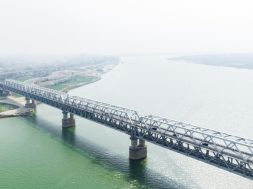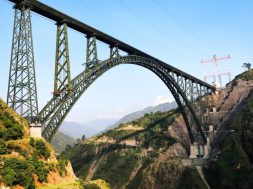Dialogues – Exteriors

The exterior of a building can not only serve as the “Sign of Design” but also incorporate energy efficiency in the entire design scheme. Ace Update speaks to a few architects.
Prem Nath, Principal Architect, Prem Nath and Associates

Facade as a sign of design
The current trends regarding facades are a phenomenon. We could say that in the last few years, an additional function has been added to the well-known aesthetic, waterproof and insulating (thermal and acoustic) facades’ functions, that is the minimization of energy consumption. This is not exactly a new function, but rather an extension of the previous. Either through passive shading and ventilation or complex dynamic systems, the need to control a building’s interior environment to reduce our reliance on air conditioning, heating systems or artificial lightning, has led to the development of the buildings’ exteriors, made possible by technology.
Design interventions in the exterior of a building for energy efficiency
Façade is the exterior element of the building that separates the indoors and outdoors, yet another significant role of a façade is giving image to the building. Façades perform under the influence of climate conditions and affect the indoor living conditions; therefore, the first criteria of a sustainable façade are usually defined as material and energy efficiency. The industry has been practising sustainable and eco-friendly structure over decades it is nothing new. A facade must meet steep requirements as both the first skin that protects a building, its interiors, and its materials and as the first thing a person sees. In addition to weather resistance, shade, ventilation and durability, its appearance is extremely vital for any architectural project.
This building complex is designed with deep windows with Chajja protecting the interiors from heat as well as adding value to the aesthetics of the building, On the other hand, the glass façade is covered with a triangular Chajja over it acting as a screen for the interiors protecting the building from heat and giving the interior shade.
A glass façade is aesthetically pleasing; it allows the natural light in, but the heat as well. As a result, architects have started using Double glass which lets the lights in and blocks the heat allowing the heat to reflect in the atmosphere but in this way, the heat is trapped and it creates the Green House Effect – To avoid this we use Solar glass (Clear glass) which is composed of concentric cells, which activate when exposed to the sun, absorbing its rays and converting them into clean electricity. The heat is observed by the glass panels and converted into reusable energy which provides great thermal performance, and a new source of free, clean electricity. The electricity generated by the system can be either injected to the grid, or it can be consumed right in the instant that it is generated. The thermal barrier that they create results in energy savings.
Ajmera Towers is a high-performance sustainable façades Building – that uses the least possible amount of energy to maintain a comfortable interior environment, which promotes the health and productivity of the building’s occupants. The curvy Chajja here gives the building shade also act as a mini balcony in which there are planting done showing greenery, cooling the surroundings, harvesting and serving irrigation purpose.
Mankind has often taken inspiration from nature to solve problems since nature has sophisticated processes, refined for thousands of years. While manmade systems are unsustainable, natural processes embody sustainability principles; therefore, there are many things to learn from nature to solve design problems and create a more sustainable future.
Dhananjay Pawar, Principal Architect, Synectics Architects

The exterior of a building as a showstopper
Any exterior of a building or any independent property signifies its identity or activity involved in it. It’s again a signature of an individual designer to create or reflect his style and creativity. We always believe in timeless architecture style, whether it might be in a traditional style or contemporary style. Each concept has its beauty unless it’s a mature design and executed. The exterior shall either blend with the existing streetscape or shall dominate the skyline of the city.
For example, The Taj Mahal Palace in Mumbai gives us a grand and heritage look and is of course the showstopper. The second example is the Milwaukee Art Museum in Wisconsin, USA. The two projects which fascinate me personally are Kanchanjunga, a residential building in Mumbai by Ar. Charles Correa and Heydar Aliyev Cultural Center by Zaha Hadid in Azerbaijan.
Efficient methods to weatherproof exteriors India is blessed with three seasons altogether. The exterior façade shall be designed in keeping in mind the sun path round the year and weather/ climatic conditions. I believe in a breathable façade rather than a cosmetic one. Also, the heat load plays a vital role in designing the facade during the daytime heat load. And finally, the intelligent and creative use of lighting aids in the evening time, and the night plays a vital role in adding beauty to the skyline as well as the streetscape of the city.
Design interventions to make a building exterior energy efficient
I believe that the facade should breathe rather than making it dead. It should complement the nature and climatic conditions in that particular region. Also, it should speak or communicate with activity or the use of the building. Use of terracotta tiles/ louvres reduces the heat load inside the building, club metal or terracotta louvres with glass which shall again create an interesting collage in the exterior reducing the reflection and heat load in the interior as well the exterior.
Niraj Doshi, Principal Architect, Niraj Doshi Design Consultancy

The Barcelona Pavilion – a “Sign of Design”
The very famous international project, known as the “Barcelona Pavilion” by Ar. Mies van der Rohe is a perfect example of a “Sign of Design” and has become a foundation of all our architecture. Firstly, the language of overhangs which protects the habitable spaces below from harsh sunlight during daytime. Secondly, the use of natural material in the form of a feature wall made up of natural stone that gives it a grounding effect. Last but not least, the use of natural elements such as a waterbody in combination with a minimal landscape to help keep the atmosphere cool while having a soothing effect on the eyes.
Cookie Consent
We use cookies to personalize your experience. By continuing to visit this website you agree to our Terms & Conditions, Privacy Policy and Cookie Policy.








